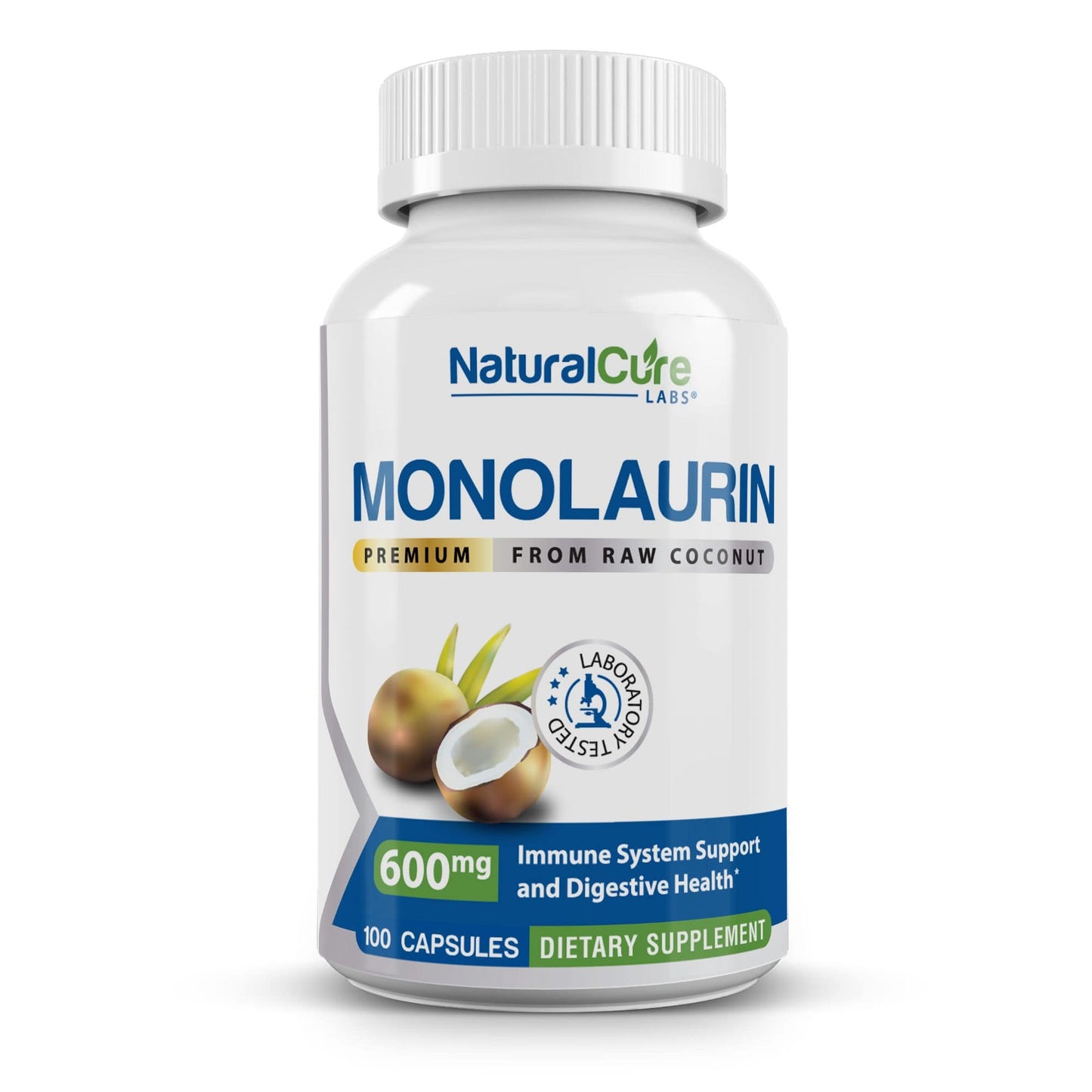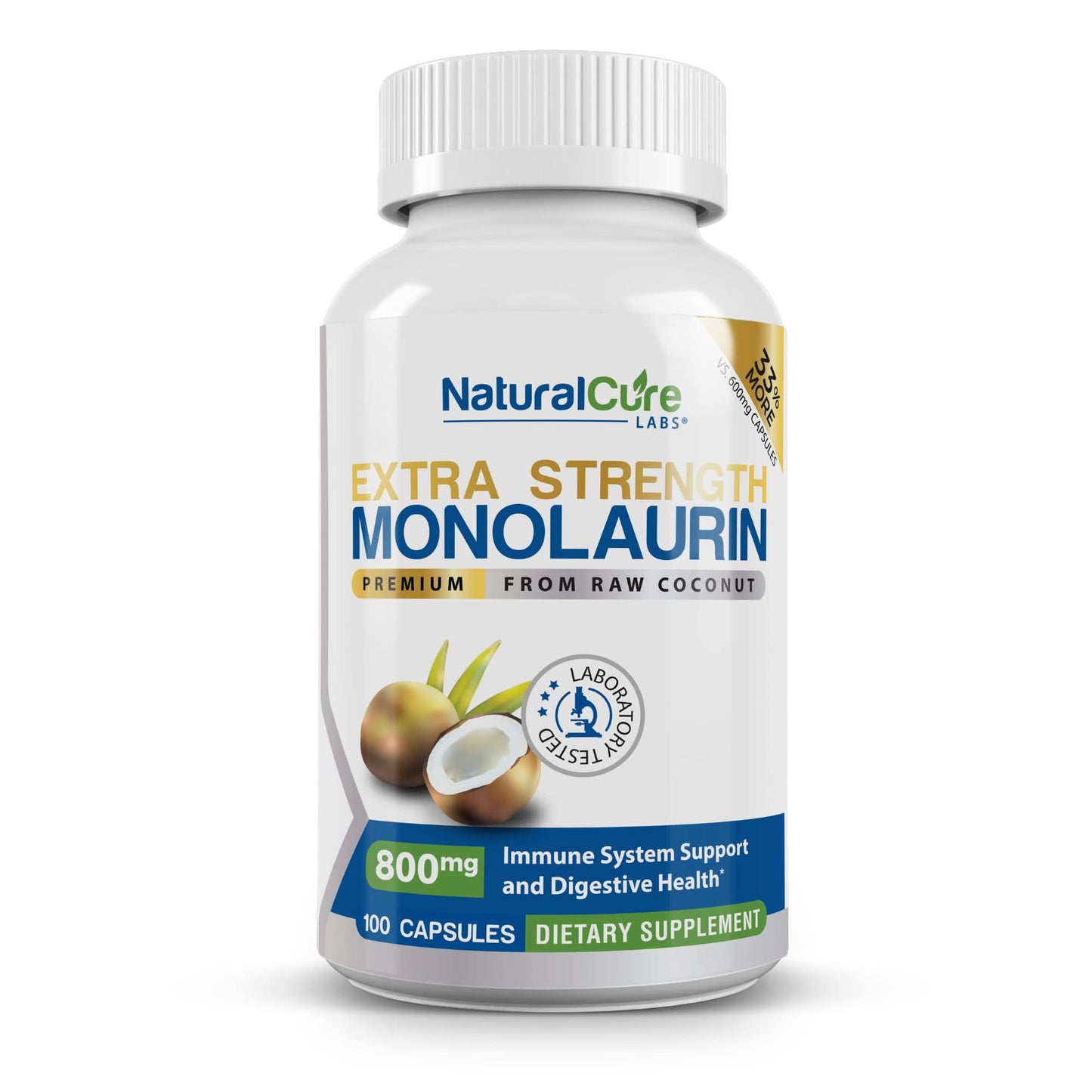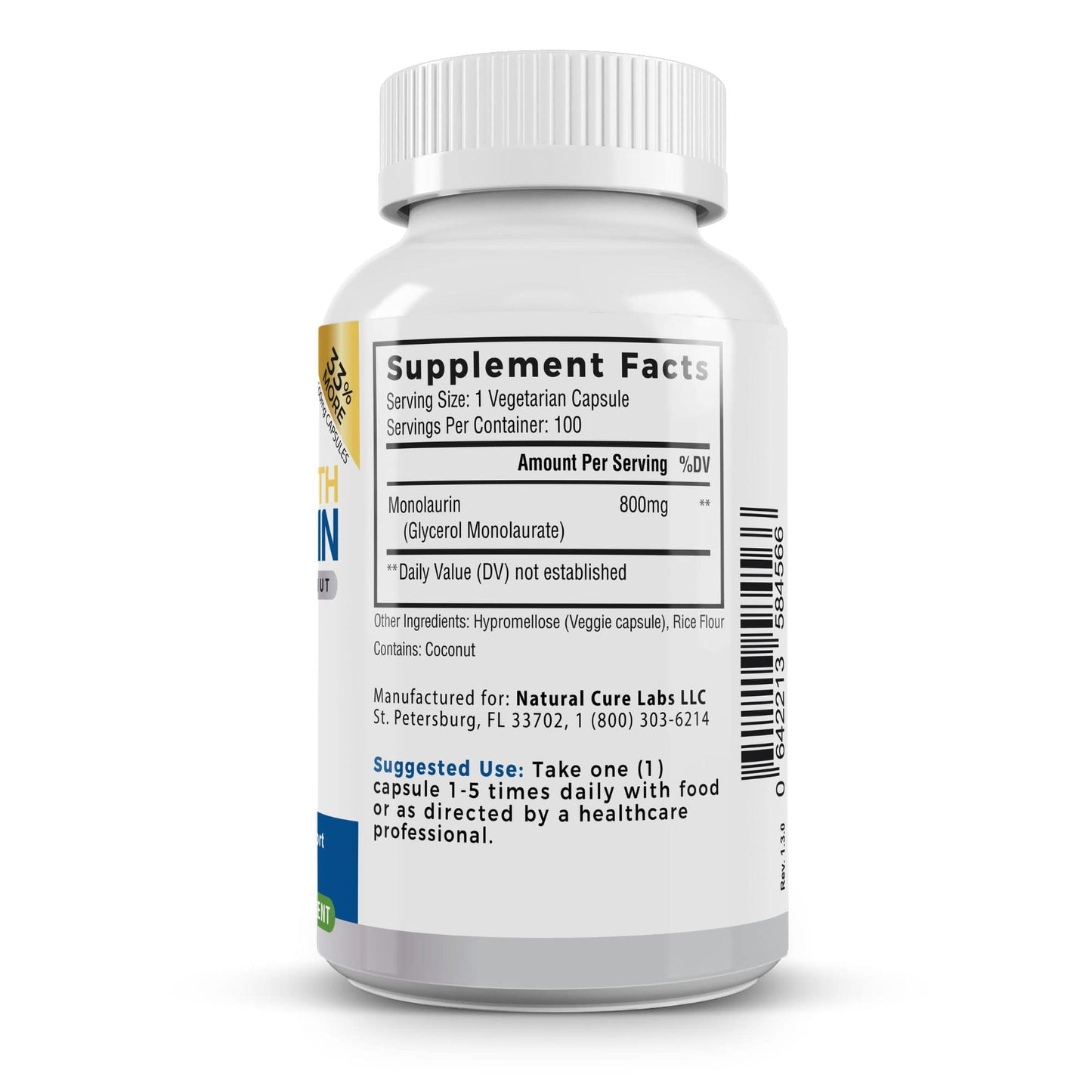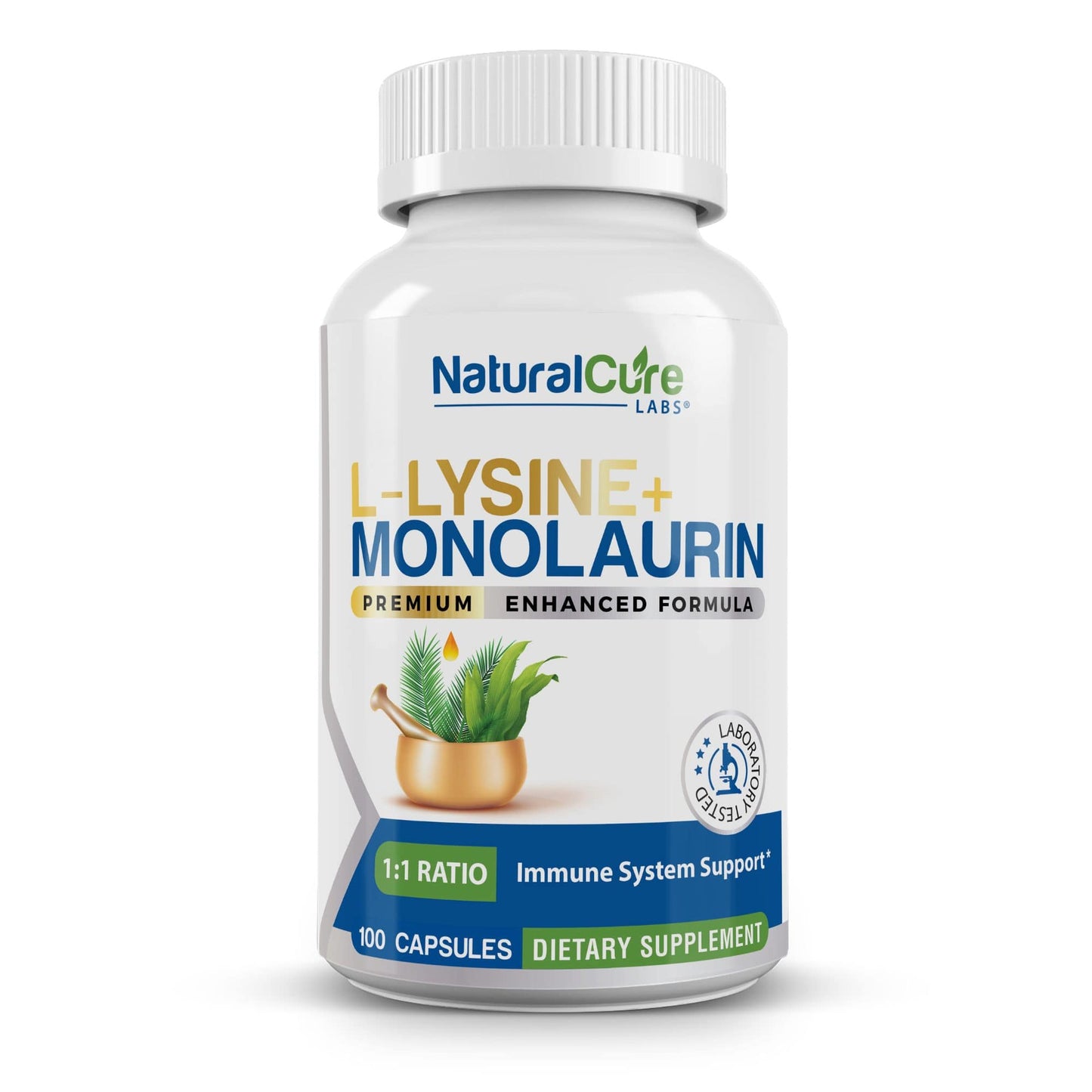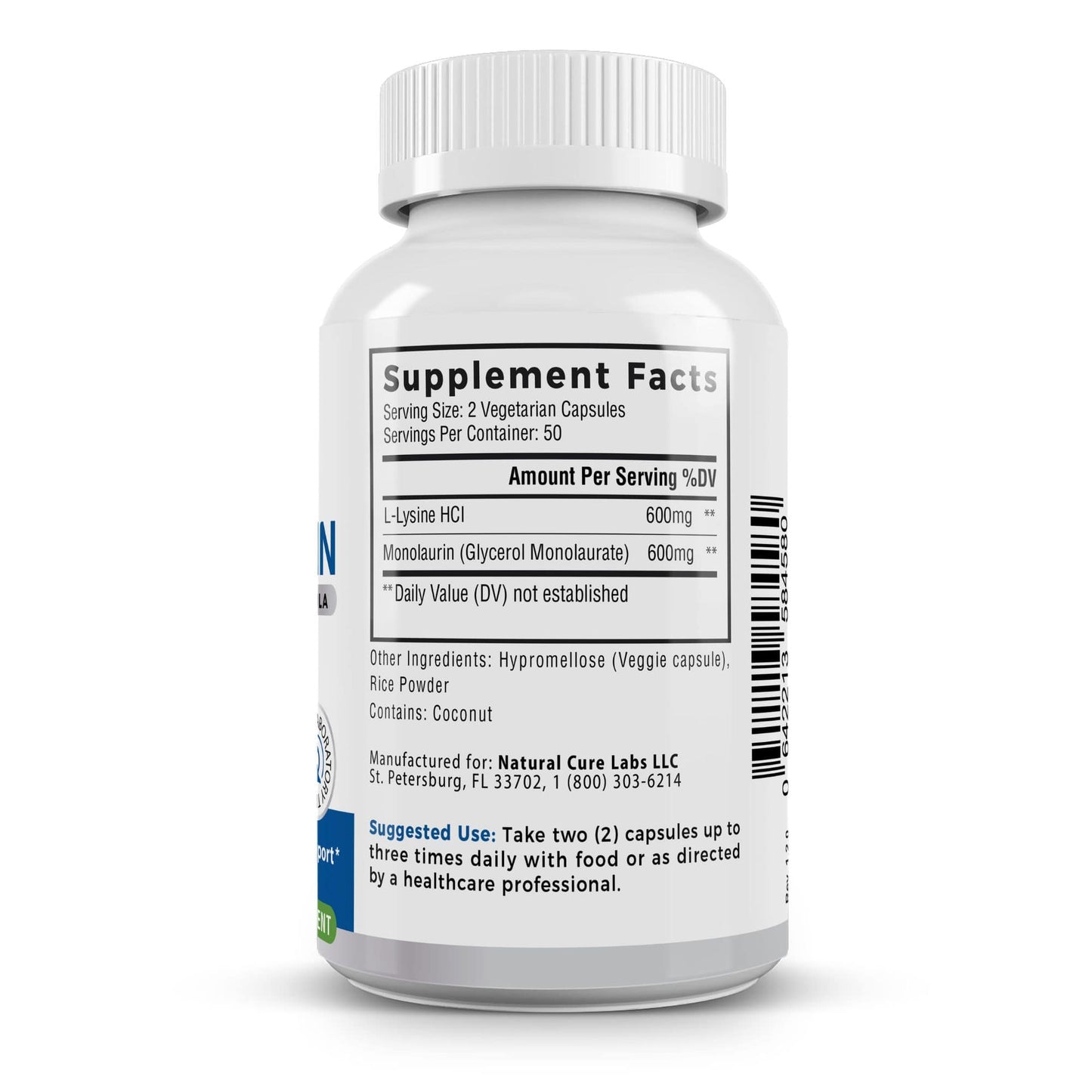
📝 Medically reviewed by Dr. Patricia Shelton
🔍 Last updated November 11, 2025
📚 4 citations
📖 4 minute read

Dr. Patricia Shelton, MD, has been a medical communicator and educator since 2014. She holds a Doctor of Medicine degree and a Bachelor's degree in Neuroscience, both from the University of Washington in Seattle.
–
Monolaurin is a naturally occurring fatty substance most commonly associated with coconut oil. Coconut oil contains a relatively high proportion of lauric acid, which is one of the components of monolaurin, so it’s the most common source for producing this compound.
While the compound itself remains the same regardless of delivery format, monolaurin is typically available in two common forms in dietary supplement products: pellets and capsules.
The choice between pellets and capsules does not affect the molecular structure of monolaurin. Instead, the formats differ in measurement, convenience, packaging, and user experience.
Understanding Monolaurin as an Ingredient
Fatty acids can exist in multiple structural states. A triglyceride has three fatty acid molecules bound to a single molecule of glycerol. Triglycerides are very common in nature, including in the human body. A monoglyceride has only one fatty acid molecule bound to glycerol. Monolaurin is a monoglyceride.
Lauric acid is a medium-chain fatty acid (MCFA)¹. In its natural triglyceride form, three molecules of lauric acid are bound to glycerol. During processing or digestion, these triglycerides can be broken down into monoglycerides, including monolaurin ².
This structural distinction is significant in supplementation because although monolaurin originates from the same raw materials as coconut oil, it is not the same as coconut oil or lauric acid. The conversion step changes the lipid’s molecular form, resulting in a single lauric acid chain attached to glycerol. This chemical identity is consistent whether monolaurin is served in pellet or capsule form.
See related: The Positive Effects Of Monolaurin And Health
Monolaurin Pellets
Monolaurin pellets are small, bead-like granules composed of monolaurin encapsulated in glycerol. The pellet form retains monolaurin’s naturally firm, wax-like texture at room temperature, which is shaped into small teardrop-shaped or spherical pellets for scooping and measurement.
Key Characteristics of Pellets
- Generally contains just one active ingredient (monolaurin), along with the carrier (glycerol)
- If chewed, pellets will have the naturally waxy, soapy, bitter taste characteristic of monolaurin, so chewing is not recommended
-
Requires manual counting or careful scooping to determine accurate serving size
-
Typically packaged in jars or wide-mouth containers with a scoop
This presentation is sometimes chosen by individuals who want more flexibility in adjusting serving quantity. However, because pellet size and mass are not always identical from brand to brand, taking monolaurin in pellet form often requires more attention to product labeling to ensure consistency in dosing.
Monolaurin Capsules
Monolaurin capsules contain monolaurin in a finely milled or powdered form that is placed inside either a plant-based (vegetarian) or gelatin capsule shell. Each capsule contains a clearly defined, standardized amount of monolaurin, which is listed directly on the Supplement Facts panel, allowing for consistency in dosing.
Key Characteristics of Capsules
- Pre-measured serving size stated clearly on label
- Available in vegetarian/plant-based capsules
- Convenient for daily routines, travel, and organized supplement storage
-
Designed to support predictable, repeatable dosing
Capsulation does not change the underlying ingredient composition of monolaurin. Instead, it standardizes delivery, because the serving amount per capsule is uniform and is clearly labeled. Those who would like to get a consistent amount of monolaurin each day should choose capsules.
| Feature | Monolaurin Pellets | Monolaurin Capsules |
|---|---|---|
| Ingredient Presentation | Typically monolaurin + excipient (inactive ingredient used as a vehicle) | Monolaurin + capsule shell |
| Serving Measurement | Counted manually or measured with scoop | Pre-measured per capsule |
| Routine Convenience | Additional handling (scooping and then swallowing with a cold liquid) | Typical use — like a daily multivitamin |
| Portability | Less compact for travel | Easy to carry and store |
| Label Clarity | May require interpretation of pellet count | Clear serving amount per capsule |
| Packaging Style | Jars or tubs | Bottled capsules |
Both formats contain the same underlying compound, but the capsule format emphasizes clarity, consistency, and convenience, while the pellet form emphasizes minimal ingredient composition and flexible measurement.
Manufacturing and Quality Standards
Regardless of format, monolaurin used in dietary supplements is typically produced according to Good Manufacturing Practice (GMP) standards, which are outlined in 21 CFR Part 111, the U.S. regulatory framework guiding the manufacturing, packaging, and labeling of dietary supplements ³. These regulations help ensure:
- Ingredient identity testing
- Purity and contamination screening
- Batch consistency verification
- Traceable documentation across production lots
For capsule products, manufacturing may also incorporate excipients (inactive ingredients) that help ensure uniform filling during capsulation⁴.
Pellet formats do not require a capsule, but usually include excipients to form the granules.
Quality is determined by sourcing, testing, and manufacturing controls, not by format alone. There are both high-quality and low-quality capsules, and the same is true of pellets.
Which One is Better?
While selection is always preference-based, capsules are commonly preferred for:
- Consistent measurement
- Clear labeling of dosage
- Easy integration into pill organizers, travel kits, or daily routines
-
A familiar, discreet delivery format
Capsules also simplify communication about serving size, because each unit contains the same measured amount. This predictability can make capsules particularly suitable for those who value structured supplement planning.
Conclusion
Monolaurin pellets and capsules contain the same core ingredient, but they differ in how the ingredient is portioned and presented. Pellets highlight ingredient simplicity and flexible measuring, while capsules emphasize dosing clarity, consistency, and convenience.
For individuals who prefer structured daily routines, travel-friendly packaging, and pre-measured servings, capsules may offer a practical and familiar format. For those who prioritize minimal formulation or adjustable serving quantity, pellets may be suitable.
The selection comes down to personal format choice, not necessarily functional difference. Both options are valid. The choice is about format preference, handling preference, and routine style.
Keep reading: The Top 5 Health Benefits Of Coconut Oil
References
- Dayrit, F. M. (2015). The Properties of Lauric Acid and Their Significance in Coconut Oil. Journal of the American Oil Chemists' Society, 92(1), 1–15.https://doi.org/10.1007/s11746-014-2562-7
- German, J. B., & Dillard, C. J. (2006). Composition, Structure and Absorption of Milk Lipids: A Source of Energy, Fat-Soluble Nutrients and Bioactive Molecules. Critical Reviews in Food Science and Nutrition, 46(1), 57–92. https://doi.org/10.1080/10408690590957098
- U.S. Food & Drug Administration. (2021). Current Good Manufacturing Practice (cGMP) for Dietary Supplements, 21 CFR Part 111. https://www.ecfr.gov/current/title-21/subchapter-B/part-111
- Rowe, R.C., Sheskey, P.J., & Quinn, M.E. (Eds.). (2009). Handbook of Pharmaceutical Excipients (6th ed.). Pharmaceutical Press. http://datastandards.co.uk/casepdf/case5.pdf

